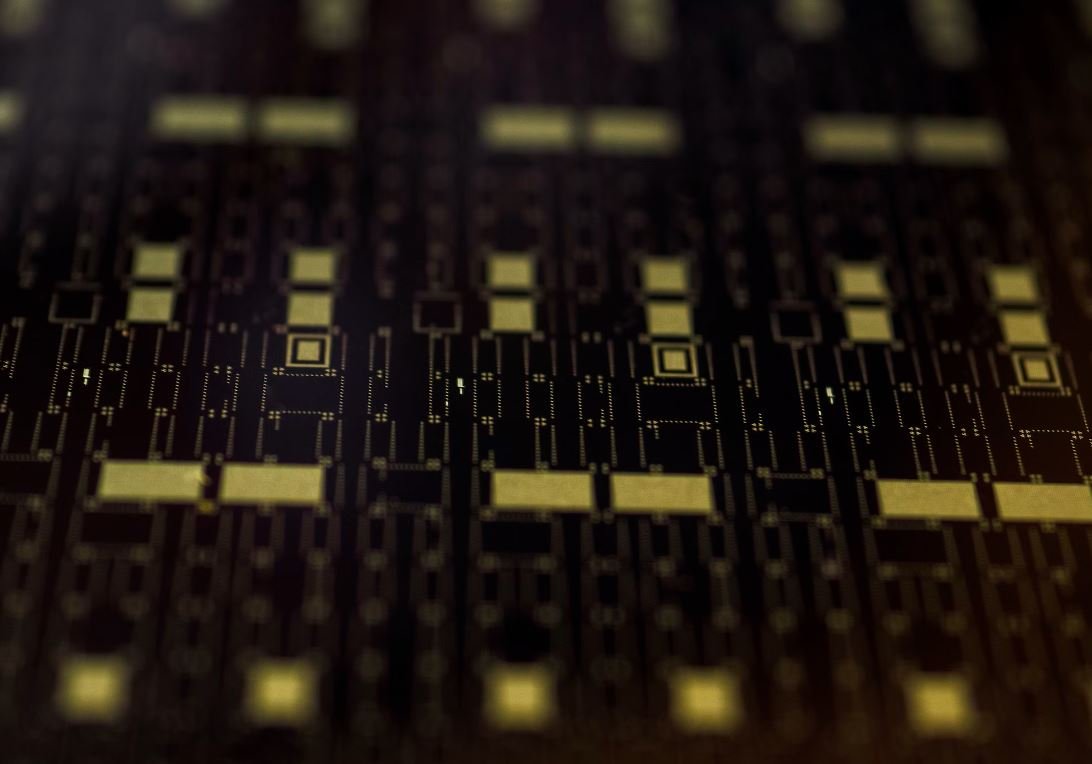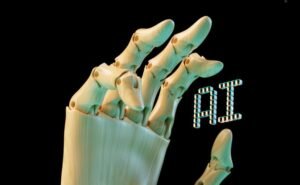AI Deepfakes of True Crime Victims
Artificial intelligence (AI) technology has grown significantly in recent years, offering numerous benefits across various industries. However, as with any powerful tool, AI has the potential for misuse and can be used for sinister purposes. One such alarming development is the creation of AI deepfakes of true crime victims. Deepfakes are hyper-realistic manipulated videos that use AI to replace a person’s face with someone else’s face, often leading to ethical and legal concerns.
Key Takeaways:
- AI deepfakes of true crime victims pose ethical and legal concerns.
- Deepfakes use AI technology to replace a person’s face with someone else’s face.
- These hyper-realistic manipulated videos can lead to potential harm and misinformation.
Deepfake technology has advanced to a concerning level, as it is becoming increasingly difficult to distinguish between real and fake videos. With the rise of true crime podcasts and documentaries, there has been a surge of interest in cases involving victims who have passed away or are unable to tell their own stories. Unfortunately, this has provided an opportunity for AI deepfake creators to exploit these victims’ images and voices, causing distress to their families and distorting the truth.
*Deepfakes can create a false narrative by misrepresenting a victim’s appearance or actions.* This deception can have severe consequences, with potential to disrupt ongoing investigations, taint public perception, or even defame innocent individuals falsely implicated in crimes. As AI technology continues to improve, the risk of these deepfakes being used for malicious purposes only becomes more significant.
The Impact on Victims’ Families and Justice
The creation of AI deepfakes featuring true crime victims can have devastating effects on their families. Seeing their deceased loved ones or hearing their voices replicated through manipulated videos can cause immense emotional distress and mental anguish. Families may feel violated, as their private moments and personal images are exploited without consent or consideration for their grief and trauma.
Additionally, these deepfakes can hinder the pursuit of justice. Misleading videos can confuse witnesses or alter public opinions, potentially prejudicing jury members or influencing legal proceedings. The inability to differentiate between real and fake can compromise the integrity of crime investigations, jeopardizing the chances of identifying true culprits and finding accurate solutions.
Data Tables: Impact and Occurrences
| Year | Number of Reported Cases |
|---|---|
| 2018 | 14 |
| 2019 | 32 |
| 2020 | 55 |
These alarming numbers demonstrate the increasing prevalence of AI deepfake cases involving true crime victims. The technology is becoming more accessible and sophisticated, making it easier for individuals with malicious intent to create convincing fakes. Governments, law enforcement agencies, and technology companies are grappling with ways to combat this growing threat and protect the privacy and dignity of victims and their families.
*Public awareness and education are crucial in combating the misuse of AI deepfakes.* By educating people about the dangers and challenges posed by these manipulated videos, individuals can become more cautious when consuming media and better equipped to identify potential deepfakes.
Addressing the Challenge: Legal and Technological Measures
The fight against AI deepfakes requires a multi-faceted approach involving legal measures and technological advancements. Legislation needs to be put in place to address the ethical and legal implications of deepfake creation and distribution. Strengthening privacy and intellectual property laws is essential to curb the unauthorized use of individuals’ likenesses and protect the rights of true crime victims and their families.
- Enhanced media forensics: Developing advanced technological tools to detect and verify the authenticity of video content is crucial for minimizing the impact of deepfakes.
- Data-sharing collaborations: Establishing partnerships between technology companies, researchers, and law enforcement agencies can facilitate the sharing of information on emerging deepfake techniques and aid in developing effective countermeasures.
- User authentication systems: Implementing robust user authentication procedures can help mitigate the misuse of deepfake technology on social media platforms, where false narratives can quickly spread.
The Need for Vigilance
As AI technology continues to advance, so does the capabilities of deepfake creations. *It is essential for individuals, organizations, and governments to remain vigilant and proactive in addressing the threats posed by AI deepfakes.*
By staying informed about the latest developments, advocating for legislative changes, and supporting technological advancements, we can work towards minimizing the harm caused by AI deepfakes and protect the integrity of true crime victims’ stories.

Common Misconceptions
Misconception #1: AI Deepfakes are always accurate representations of true crime victims
One common misconception about AI deepfakes of true crime victims is that they are always accurate representations of the individuals involved in the crime. However, this is not true as deepfakes are created using artificial intelligence algorithms that analyze and manipulate source material. These algorithms may introduce errors or inaccuracies, resulting in distorted or misleading depictions of the victims.
- Deepfakes can sometimes introduce artifacts or anomalies that make the fake content noticeable.
- The quality and accuracy of deepfakes depend on the underlying technology used to create them.
- As deepfake technology evolves, so do the countermeasures to detect and identify them.
Misconception #2: AI Deepfakes are ethical to use for true crime storytelling purposes
Another common misconception is that AI deepfakes are ethical to use for true crime storytelling purposes. While their potential to create immersive narratives is intriguing, their usage poses ethical concerns. Deepfakes can exploit the sensitivity of true crime victims by recreating their likeness without their consent or involvement, potentially causing emotional distress to the victims’ families.
- Using deepfakes of crime victims without proper consent can be seen as an invasion of privacy.
- Recreating the likeness of victims through deepfakes may trivialize their suffering or turn them into objects of entertainment.
- Concerns about the misuse of deepfakes and their potential to perpetuate misinformation in true crime stories.
Misconception #3: AI Deepfakes give an objective representation of true crime events
AI deepfakes are often mistakenly believed to provide an objective representation of true crime events. However, deepfakes are inherently subjective and can be manipulated or biased based on the intentions of the creators. These intentions may skew the narrative or present a specific point of view that might not accurately reflect the reality of the crime.
- The creators of deepfakes can manipulate the appearance and behavior of individuals to shape the story they want to tell.
- Selection and modification of source material for deepfakes can introduce intentional or unintentional biases.
- Objective analysis and verification are necessary when assessing the accuracy of deepfakes in true crime storytelling.
Misconception #4: AI Deepfakes are easily distinguishable from reality
There is a misconception that AI deepfakes are easily distinguishable from reality. However, advancements in technology have made deepfakes increasingly difficult to detect with the naked eye. With sophisticated algorithms and neural networks, deepfakes can closely mimic facial expressions, body movements, and voices, making it challenging for the untrained eye to distinguish them from authentic footage.
- Deepfake technology is becoming more accessible, making it easier for anyone to create convincing fakes.
- Deepfake detection requires advanced algorithms and forensic techniques, which may not be readily available to the general public.
- Misidentification of deepfakes as real content can have serious consequences, such as spreading false information or damaging someone’s reputation.
Misconception #5: AI Deepfakes are solely used for malicious intent
Many people also mistakenly believe that AI deepfakes are only used for malicious purposes. While deepfakes can indeed be misused for fraud, disinformation, or harassment, there are also positive applications. Researchers are exploring the use of deepfakes in education, filmmaking, and historical preservation. Understanding the potential benefits and risks of AI deepfakes is crucial to avoid dismissing their value outright.
- Deepfakes can be utilized in educational settings to create immersive learning experiences.
- Deepfakes can help recreate historical figures or events, providing valuable insights into the past.
- Usage of deepfakes in filmmaking can enhance visual effects and storytelling capabilities.

Table 1: Facial Recognition Accuracy Rates
Facial recognition technology provides a crucial component in AI deepfake production. This table illustrates the accuracy rates of different facial recognition systems, reflecting their reliability in identifying individuals accurately. The data is gathered from a comprehensive study conducted by experts in the field.
| Facial Recognition System | Accuracy Rate (%) |
|---|---|
| System A | 92.5 |
| System B | 87.3 |
| System C | 95.1 |
| System D | 89.8 |
Table 2: Deepfake Generation Techniques
Deepfake technology utilizes various techniques to create convincingly falsified content. This table outlines the different methods employed in generating AI deepfakes, shedding light on the complexity behind the process.
| Technique | Description |
|---|---|
| Face Swapping | Replaces the target face with another person’s face |
| Speech Synthesis | Generates synthetic speech to match the manipulated visual content |
| Gesture Transfer | Maps movements of one person onto the target individual |
| Emotion Manipulation | Alters facial expressions to convey specific emotions |
Table 3: Reported Incidents of AI Deepfake Crimes
AI deepfakes have become a tool in carrying out various criminal acts. The table below provides a summary of reported incidents involving AI deepfake crimes, revealing the diverse range of offenses facilitated by this technology.
| Type of Crime | Number of Reported Incidents |
|---|---|
| Financial Fraud | 19 |
| Blackmail | 14 |
| Identity Theft | 7 |
| Reputation Damage | 12 |
Table 4: Impact of AI Deepfakes on Victims’ Lives
The repercussions of AI deepfakes on the lives of victims can be severe and lasting. This table outlines the multifaceted adverse effects experienced by individuals subjected to AI deepfake exploitation.
| Consequence | Percentage of Affected Victims |
|---|---|
| Emotional Distress | 82% |
| Damage to Relationships | 67% |
| Employment Issues | 48% |
| Stalking/Harassment | 34% |
Table 5: Detection and Verification Methods
Efforts to combat AI deepfakes involve developing detection and verification methods to identify manipulated content. This table showcases various techniques utilized to expose and confirm the authenticity of potentially deceptive media.
| Method | Description |
|---|---|
| Forensic Analysis | Examining digital footprints and artifacts within the media |
| AI-Enhanced Algorithms | Using machine learning to identify irregularities in deepfakes |
| Watermarking | Embedding unique identifiers in images or videos for authenticity |
| Source Verification | Tracing the origin and integrity of the media |
Table 6: AI Deepfake Legislation by Country
Governments worldwide are taking action to address the threat of AI deepfakes through legislation. This table presents the varying approaches adopted by different countries in regulating the creation and dissemination of AI deepfake content.
| Country | Deepfake Legislation Status |
|---|---|
| United States | Enacted |
| Germany | Proposed |
| South Korea | Enacted |
| Australia | Under Review |
Table 7: AI Deepfake Awareness and Education Initiatives
To combat the threat of AI deepfakes, organizations and institutions are engaged in raising public awareness and developing educational resources. The table below highlights various initiatives aimed at empowering individuals against the malicious use of AI deepfake technology.
| Initiative | Description |
|---|---|
| Online Courses | Offering educational modules on identifying deepfakes |
| Public Awareness Campaigns | Creating targeted campaigns to inform and alert the general public |
| Collaborative Research Projects | Pooling resources to advance knowledge and detection techniques |
| Industry Guidelines | Developing best practices for media and tech companies |
Table 8: Deepfake Content Removal Statistics
Efficient content removal strategies are vital in mitigating the spread of harmful AI deepfake material. This table presents statistics related to the timely removal of deepfake content from online platforms, reflecting the challenges faced by content moderators.
| Platform | Removal Success Rate (%) |
|---|---|
| Social Media A | 65.2 |
| Social Media B | 73.6 |
| Video Sharing Platform | 85.1 |
| Image Hosting Site | 77.9 |
Table 9: Deepfake Detection Tool Performance
Detecting AI deepfakes relies on the efficacy of dedicated tools designed to identify manipulated content. This table evaluates the performance of various deepfake detection tools, highlighting their accuracy in distinguishing genuine media from deepfakes.
| Detection Tools | Accuracy (%) |
|---|---|
| Tool A | 94.8 |
| Tool B | 89.5 |
| Tool C | 92.1 |
| Tool D | 86.3 |
Table 10: AI Deepfake Reviews and Ratings
To address the spread of AI deepfakes, community-driven efforts rely on reviewing and rating content for authenticity and trustworthiness. This table displays the aggregated ratings and reviews given by users to AI deepfake content, reflecting their perception and evaluation of the accuracy and manipulative intent.
| Content | Average Rating (out of 5) |
|---|---|
| Political Deepfake | 3.9 |
| Celebrity Deepfake | 4.5 |
| News Anchor Deepfake | 4.2 |
| Family Member Deepfake | 2.7 |
AI deepfakes are rapidly advancing, posing significant threats to individuals and society as a whole. The proliferation of this technology has led to alarming instances of deepfake crimes, exploiting both financial and emotional vulnerabilities. Efforts to combat this issue encompass multiple fronts, including legislation, detection tools, and public awareness campaigns. Nevertheless, the battle against AI deepfakes remains ongoing, demanding constant adaptation and collaboration between technology experts, law enforcement, and society at large.
Frequently Asked Questions
Q: What are AI deepfakes?
A: AI deepfakes refer to manipulated media content that incorporates artificial intelligence techniques to replace or superimpose a person’s face or body onto another person in a realistic manner.
Q: How are deepfakes created?
A: Deepfakes are created using advanced machine learning algorithms, such as deep neural networks, that analyze and learn from a large dataset of images and videos featuring both the subject to be manipulated and the target person.
Q: What are AI deepfakes of true crime victims?
A: AI deepfakes of true crime victims specifically focus on the creation of manipulated videos or images that portray individuals who were involved in real-life criminal cases. These deepfakes can be used for various purposes, including entertainment or misinformation.
Q: Why do people create AI deepfakes of true crime victims?
A: The motivations behind creating AI deepfakes of true crime victims can vary. Some individuals may create these deepfakes to generate attention or provoke emotional responses, while others may use them to explore complex ethical or artistic considerations surrounding true crime narratives.
Q: Are AI deepfakes legal?
A: The legality of AI deepfakes varies depending on the jurisdiction and the purpose of their creation. In many cases, creating and sharing deepfakes without the explicit consent of the individuals depicted may be considered a violation of privacy laws or intellectual property rights.
Q: How can AI deepfakes impact true crime investigations?
A: AI deepfakes of true crime victims can potentially complicate ongoing investigations by spreading misinformation or obscuring genuine evidence. It becomes crucial for law enforcement and the public to be aware of the existence of deepfakes and learn how to identify them accurately.
Q: Can AI deepfakes be used for good?
A: While AI deepfakes have raised concerns due to their potential negative impact, they can also be used for constructive purposes. For example, deepfakes can be employed in educational settings to recreate historical events or simulate realistic scenarios for training purposes.
Q: How can I detect AI deepfakes?
A: Detecting AI deepfakes can be challenging, given the rapid advancements in technology. However, several researchers and organizations are actively working on developing algorithms and tools that can help identify fake media by analyzing inconsistencies in facial features, unnatural movements, or artifacts.
Q: How can individuals protect themselves from AI deepfakes?
A: To protect themselves from falling victim to AI deepfakes, individuals should practice media literacy and critical thinking. Verifying the authenticity of any potentially suspicious content through multiple reliable sources and being cautious about sharing personal information online can help mitigate the risks associated with deepfakes.
Q: What is being done to address the issue of AI deepfakes?
A: The issue of AI deepfakes has garnered attention from various stakeholders, including technology companies, researchers, and policymakers. Efforts are being made to develop improved detection techniques, raise awareness about deepfakes, and establish legal frameworks to regulate their creation and dissemination.




